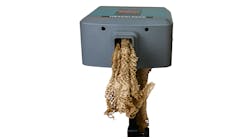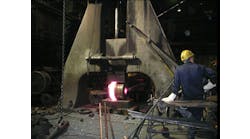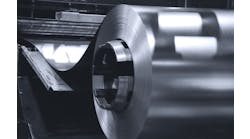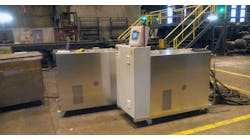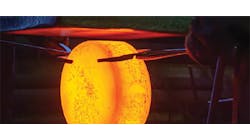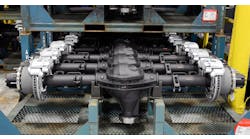A: Trimming Ti and PH stainless grades have been a problem in the forging industry for years. In my experience, using glass coatings has helped to reduce the oxidation of the surfaces of Ti grades, which reduces the formation of the hard abrasive oxides that literally eat up trim die edges. Also, I recommended that the trim blades (lowers) be welded with Stellite and then the edges reformed by grinding to form a staggered or “wave form” trim line. This adds to the cost of the trimmer but it can extend tool life for two reasons. It reduces the shock effect when trimming a hard alloy and it reduces the contact time between the hot flash metal and die edges. Essentially it causes a scissor-like effect during the trim operation. I know that this approach helps for the Ti alloys and I expect it would help for the PH stainless grades, too. I should add that the shear cracks at the trim line that you are experiencing with the latter grades can be traced to the cooling of these grades after forging. Remember, the PH grades begin to harden by a precipitation reaction that can start as low as 1,450ºF. This means that the forgings must not cool below 1,500ºF at the thin flash before trimming or the metallurgical reaction can cause the flash to harden, causing trim tears or trim pull up defects. You must be sure that the press operators do not allow the forgings to accumulate behind the trim operations. This applies to titanium alloy forgings, as well. In a few cases, and with typical furnace heating (versus induction), the problems with both grades can be resolved with a “wash heating” to about 1,800ºF for PH stainless and 1,700ºF for Ti64. This is aimed at reheating the thin flash without compromising the metallurgy of the forgings.
For more than 40 years H. James Henning held key technical positions in the forging industry, including as director of technology for the Forging Industry Association, and as president of Henning Education Services, a Columbus, OH, firm specializing in customized education and training in forging technologies.
Guidelines and recommendations offered in this column are based on information believed to be reliable and are supplied in good faith but without guarantee. Operational conditions that exist in individual plants and facilities vary widely. Users of this information should adapt it, and always exercise independent discretion in establishing plant or facility operating practice.
